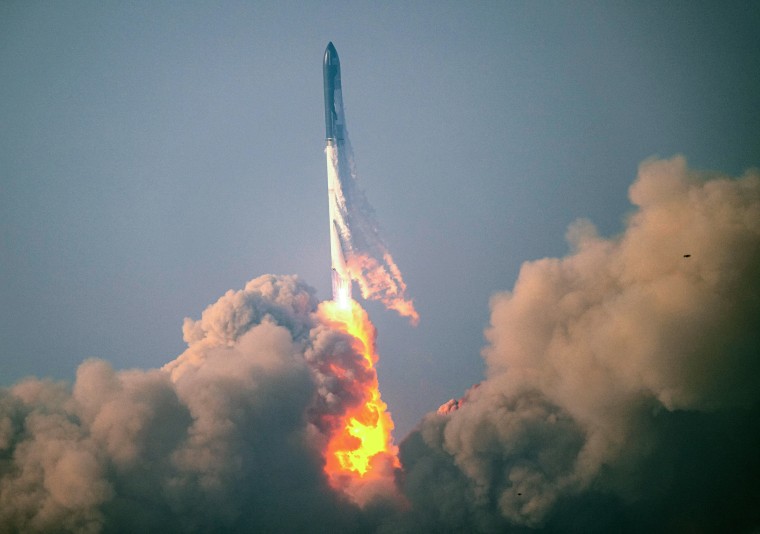SpaceX has received clearance from the U.S. Federal Aviation Administration to launch its huge Starship rocket on a much-anticipated second test flight.
The agency granted SpaceX, the private spaceflight company founded by Elon Musk, a launch license for the company’s next-generation rocket on Wednesday, after a first launch attempt in April ended in a fiery explosion.
“The FAA has given license authorization for the second launch of the @SpaceX Starship Super Heavy vehicle,” the FAA said in a statement on the social media platform X. “The FAA determined SpaceX met all safety, environmental, policy and financial responsibility requirements.”
SpaceX said Thursday that the company is aiming to conduct the uncrewed test flight Saturday during a 20-minute launch window that opens at 8 a.m. ET. The private spaceflight company was initially targeting Friday for the test flight, but Musk said Thursday on the social media platform X that the launch was being moved to Saturday because part of the rocket needed to be replaced.
The upcoming launch will take place at SpaceX’s Starbase test site in Boca Chica, Texas.
“Residents of Cameron County and those in the nearby area may hear a loud noise resulting from the rocket’s 33 Raptor engines firing upon ignition and as the vehicle launches toward space, but what people experience will depend on weather and other conditions,” the company said in a statement.
The event will be streamed live on SpaceX's website beginning around 35 minutes before liftoff.
The Starship rocket, which stands nearly 400 feet tall, is the most powerful ever developed and is designed for future missions to the moon and Mars.
The rocket’s debut launch on April 20 ended in an explosion just a few minutes into flight. The uncrewed booster failed to make orbit and caused extensive damage in and around the launch site, including to nearby tidal flats and a Texas state park. The U.S. Fish and Wildlife Service subsequently conducted an investigation and the incident prompted a safety review.
The FAA said in a project update that SpaceX had provided information on alterations it made to the rocket system including reinforcements to the rocket's launch pad and a deluge system meant to protect parts of the pad.
The regulator said the company has conformed to the environmental protection requirements for the launch.

